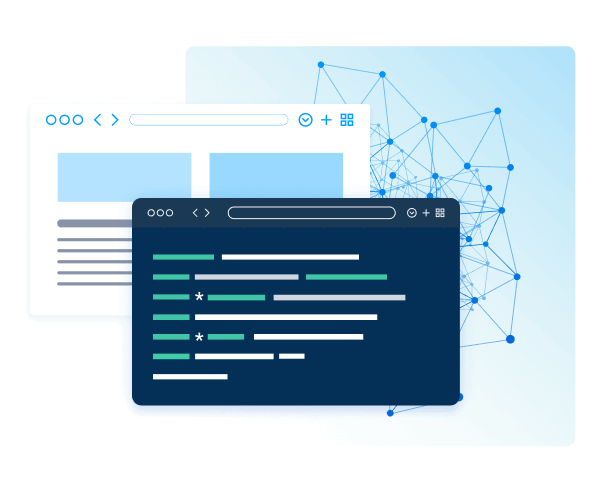Discover how a bimodal integration strategy can address the major data management challenges facing your organization today.
Get the Report →How to use SQLAlchemy ORM to access Jira Data in Python
Create Python applications and scripts that use SQLAlchemy Object-Relational Mappings of Jira data.
The rich ecosystem of Python modules lets you get to work quickly and integrate your systems effectively. With the CData Python Connector for Jira and the SQLAlchemy toolkit, you can build Jira-connected Python applications and scripts. This article shows how to use SQLAlchemy to connect to Jira data to query Jira data.
With built-in optimized data processing, the CData Python Connector offers unmatched performance for interacting with live Jira data in Python. When you issue complex SQL queries from Jira, the CData Connector pushes supported SQL operations, like filters and aggregations, directly to Jira and utilizes the embedded SQL engine to process unsupported operations client-side (often SQL functions and JOIN operations).
About Jira Data Integration
CData simplifies access and integration of live Jira data. Our customers leverage CData connectivity to:
- Gain bi-directional access to their Jira objects like issues, projects, and workflows.
- Use SQL stored procedures to perform functional actions like changing issues status, creating custom fields, download or uploading an attachment, modifying or retrieving time tracking settings, and more.
- Authenticate securely using a variety of methods, including username and password, OAuth, personal access token, API token, Crowd or OKTA SSO, LDAP, and more.
Most users leverage CData solutions to integrate Jira data with their database or data warehouse, whether that's using CData Sync directly or relying on CData's compatibility with platforms like SSIS or Azure Data Factory. Others are looking to get analytics and reporting on live Jira data from preferred analytics tools like Tableau and Power BI.
Learn more about how customers are seamlessly connecting to their Jira data to solve business problems from our blog: Drivers in Focus: Collaboration Tools.
Getting Started
Connecting to Jira Data
Connecting to Jira data looks just like connecting to any relational data source. Create a connection string using the required connection properties. For this article, you will pass the connection string as a parameter to the create_engine function.
To connect to JIRA, provide the User and Password. Additionally, provide the Url; for example, https://yoursitename.atlassian.net.
Follow the procedure below to install SQLAlchemy and start accessing Jira through Python objects.
Install Required Modules
Use the pip utility to install the SQLAlchemy toolkit and SQLAlchemy ORM package:
pip install sqlalchemy
pip install sqlalchemy.orm
Be sure to import the appropriate modules:
from sqlalchemy import create_engine, String, Column
from sqlalchemy.ext.declarative import declarative_base
from sqlalchemy.orm import sessionmaker
Model Jira Data in Python
You can now connect with a connection string. Use the create_engine function to create an Engine for working with Jira data.
NOTE: Users should URL encode the any connection string properties that include special characters. For more information, refer to the SQL Alchemy documentation.
engine = create_engine("jira:///?User=admin&Password=123abc&Url=https://yoursitename.atlassian.net")
Declare a Mapping Class for Jira Data
After establishing the connection, declare a mapping class for the table you wish to model in the ORM (in this article, we will model the Issues table). Use the sqlalchemy.ext.declarative.declarative_base function and create a new class with some or all of the fields (columns) defined.
base = declarative_base()
class Issues(base):
__tablename__ = "Issues"
Summary = Column(String,primary_key=True)
TimeSpent = Column(String)
...
Query Jira Data
With the mapping class prepared, you can use a session object to query the data source. After binding the Engine to the session, provide the mapping class to the session query method.
Using the query Method
engine = create_engine("jira:///?User=admin&Password=123abc&Url=https://yoursitename.atlassian.net")
factory = sessionmaker(bind=engine)
session = factory()
for instance in session.query(Issues).filter_by(ReporterDisplayName="Bob"):
print("Summary: ", instance.Summary)
print("TimeSpent: ", instance.TimeSpent)
print("---------")
Alternatively, you can use the execute method with the appropriate table object. The code below works with an active session.
Using the execute Method
Issues_table = Issues.metadata.tables["Issues"]
for instance in session.execute(Issues_table.select().where(Issues_table.c.ReporterDisplayName == "Bob")):
print("Summary: ", instance.Summary)
print("TimeSpent: ", instance.TimeSpent)
print("---------")
For examples of more complex querying, including JOINs, aggregations, limits, and more, refer to the Help documentation for the extension.
Free Trial & More Information
Download a free, 30-day trial of the CData Python Connector for Jira to start building Python apps and scripts with connectivity to Jira data. Reach out to our Support Team if you have any questions.





